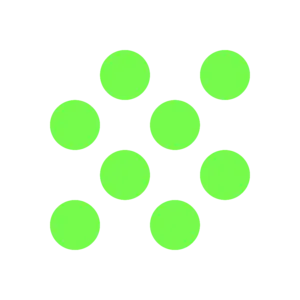Safety grading GREEN – SAFE
Locust bean gum (E410), also known as carob bean gum, is classified as GREEN because it is widely recognized as safe by both the European Food Safety Authority (EFSA) and the U.S. Food and Drug Administration (FDA). EFSA’s re-evaluation concluded that no numerical Acceptable Daily Intake (ADI) was necessary, as it does not pose a safety concern for the general population at reported use levels. The FDA lists locust bean gum as Generally Recognized As Safe (GRAS) for food uses.
Overall, toxicological studies show no evidence of carcinogenicity, genotoxicity, or reproductive toxicity. Locust bean gum functions like other soluble dietary fibers and is not absorbed intact in the gut. Instead, it passes into the colon where it undergoes fermentation by gut microbiota. The main side effects reported relate to excessive fiber intake, such as bloating or loose stools at high doses. For normal dietary exposure, it is safe.
Concerns that should be noted include rare allergic reactions (especially in occupational settings), occasional gastrointestinal discomfort at high intakes, and an EFSA call for more data on the use of locust bean gum in infant formulas. In addition, some batches were recalled in 2021 in the EU because of ethylene oxide contamination, a manufacturing impurity issue rather than an intrinsic hazard of the gum itself. Despite these caveats, the additive remains GREEN and safe for the general public.
Should You Avoid Locust Bean Gum?
For most people, there is no need to avoid locust bean gum. It has been used for decades in food production and offers safe thickening and stabilizing functions. Those with a known allergy to gums or legumes should be cautious, though such cases are very rare. Infants under 16 weeks of age may be more sensitive, so regulators request additional data before giving full approval for use in very young children’s formula. For everyone else, there are no significant risks.
Common Uses
- Ice cream and frozen desserts (to prevent ice crystal formation and improve creaminess)
- Dairy products like cheese spreads and yogurts (as a stabilizer)
- Sauces, condiments, and salad dressings (to improve viscosity and prevent separation)
- Baked goods (to improve texture and extend freshness)
- Gluten-free foods (to replace the binding effects of gluten)
- Pharmaceuticals and cosmetics (as a stabilizer and thickener)
Common Names / Synonyms
- Carob bean gum
- LBG
- Carobin
What is it?
Locust bean gum is a natural polysaccharide extracted from the seeds of the carob tree (Ceratonia siliqua), which is native to the Mediterranean region. The gum is found in the seed endosperm, which is separated, milled, and refined to produce the powdered additive. Chemically, it is a galactomannan, a polymer made of mannose and galactose sugars. Its structure enables it to form viscous solutions, making it a valuable thickener and stabilizer in many food applications.
Production involves harvesting the carob pods, removing the seeds, and then splitting the seed into the germ, husk, and endosperm. The endosperm is then milled and purified. The resulting locust bean gum powder is white to yellowish and soluble in hot water. It exhibits synergistic effects with other gums such as xanthan gum or carrageenan, which is why it is often used in combination with them in food formulations.
Locust bean gum is stable across a range of temperatures and pH conditions, making it highly versatile. Its water-binding capacity helps control moisture, prevent syneresis (water separation) in dairy products, and improve mouthfeel. Nutritionally, it contributes some fiber but no significant calories, as it is largely indigestible. Studies have shown that locust bean gum may even provide health benefits such as lowering cholesterol levels and improving glycemic response, similar to other soluble fibers.
Where it’s allowed (EU vs US)
Locust bean gum (E410) is permitted as a food additive throughout the European Union and is included in the EU database of food additives. In the United States, it is affirmed as GRAS (Generally Recognized as Safe) under 21 CFR 184.1343. It is also authorized in many other countries worldwide, reflecting its long-standing record of safe use.
